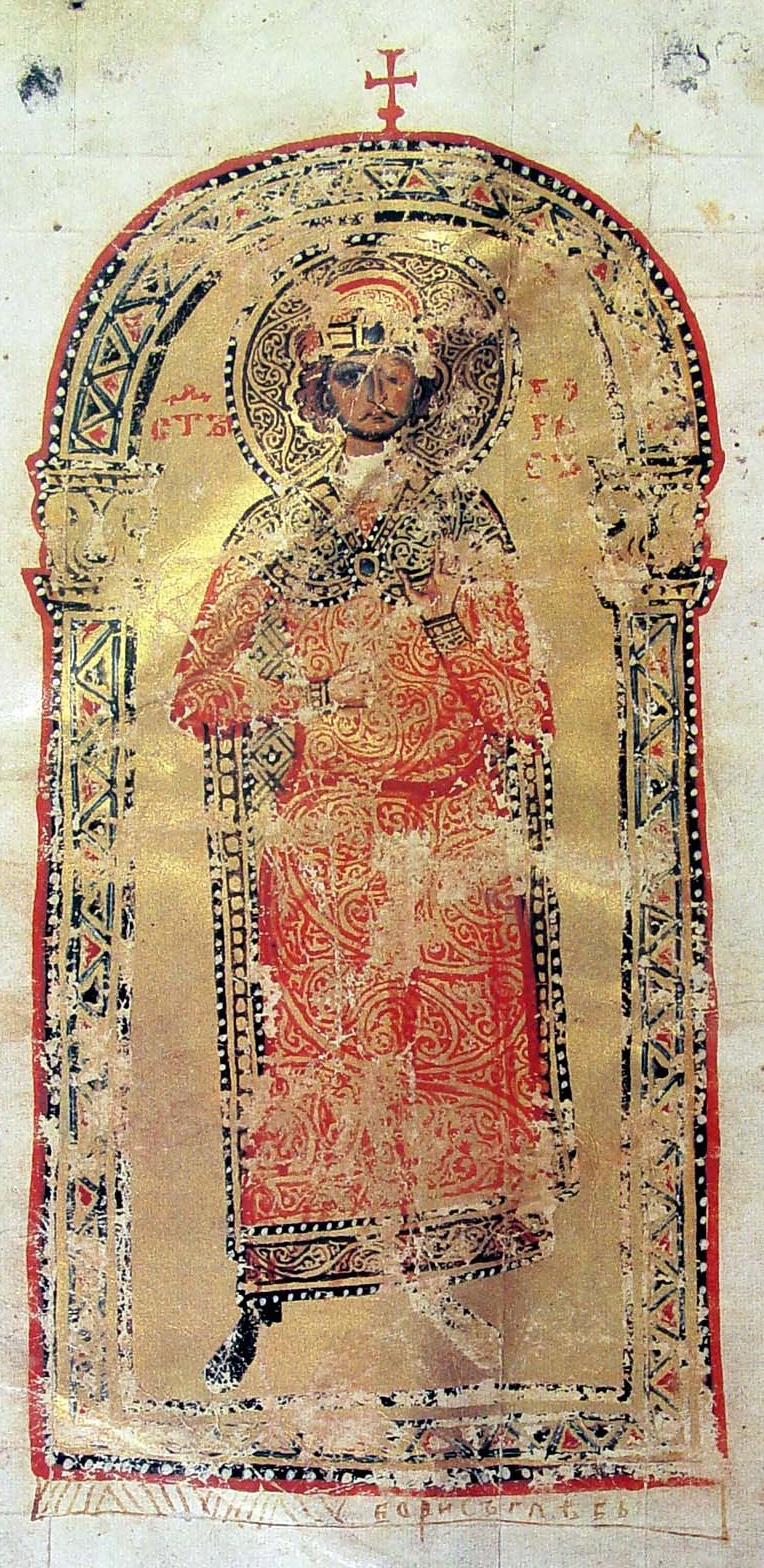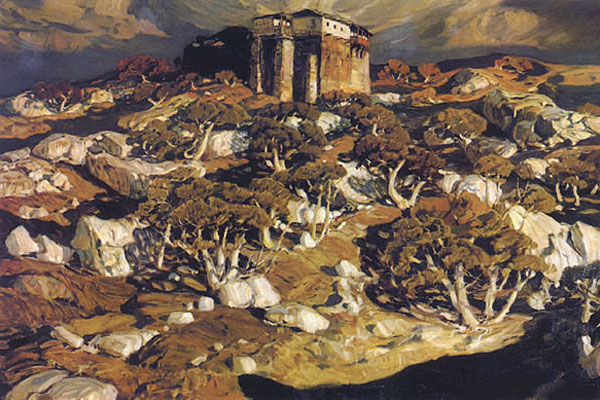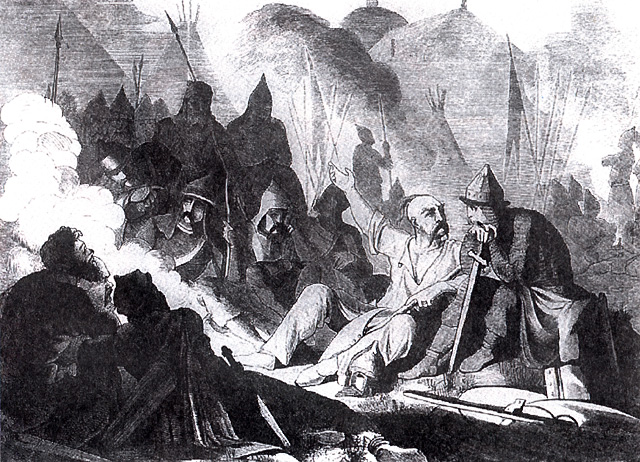|
3rd Separate Special Purpose Regiment (Ukraine)
The 3rd Separate Special Purpose Regiment or Separate Special Operations Center "East" (''Knyaz Svyatoslav Khorobryi'' OC SpO East) (Ukrainian: Окремий центр спеціальних операцій «Схід» імені князя Святослава Хороброго) is a formation of special forces as part of the Special Operations Forces (Ukraine), Special Operations Forces of the Armed Forces of Ukraine. It was subordinate to the 4th Special Intelligence Service of the Main Intelligence Directorate of the Ministry of Defense of Ukraine. The unit is quartered in Kropyvnytskyi. It is part of the Joint Rapid Reaction Forces. The regiment was formed on the basis of the 10th Separate Brigade of Special Purpose of the GRU (Soviet Union), Main Reconnaissance Directorate (GRU) of the Soviet Armed Forces. The regiment participated in the War in Donbas (2014–2022), war in Donbas. Since 2018, the regiment has been named after Sviatoslav I, Prince Svyatoslav the Brave, ... [...More Info...] [...Related Items...] OR: [Wikipedia] [Google] [Baidu] |
Joint Rapid Reaction Force
The Joint Rapid Reaction Force (JRRF) was a capability concept of the British Armed Forces from 1999 to 2010. It was a pool of specialised units from all three armed services tasked with Rapid deployment force, rapid deployment worldwide at short notice. The force was intended to be capable of mounting operations up to medium scale warfighting. It could be employed nationally, or multinationally under the auspices of NATO, the United Nations or any other coalition#Military, coalition. The JRRF was an initiative in the 1998 Strategic Defence Review (1998), Strategic Defence Review. An initial rapid reaction capability was declared in April 1999 and was fully operational in 2001. It was originally intended that JRRF would be able to mount up to two simultaneous operations of up to 15,000 personnel each. A major military exercise called Saif Sareea II was held in Oman in September 2001 to test the deployment of the JRRF. In the event of the JRRF being activated, the force commander w ... [...More Info...] [...Related Items...] OR: [Wikipedia] [Google] [Baidu] |
Knyaz
A , also , ''knjaz'' or (), is a historical Slavs, Slavic title, used both as a royal and noble title in different times. It is usually translated into English language, English as 'prince', 'king' or 'duke', depending on specific historical context and the potentially known Latin equivalents at the time; the word was originally derived from the Proto-Germanic language, common Germanic ('king'). Feminine forms of the word may be divided into two groups: * "Princess", be it princess consort (wife of a reigning prince), princess regnant (reigning princess ''suo jure''), or princess regent (reigning on behalf of an underage prince, usually her son after her husband's death) ** Belarusian language, Belarusian: ''kniahinia'' (княгіня) ** Bulgarian language, Bulgarian and Russian language, Russian: () ** Slovene language, Slovene, Serbo-Croatian, and Macedonian language, Macedonian: (in Serbian Cyrillic alphabet, Serbian and Macedonian alphabet, Macedonian Cyrillic: ) ** ... [...More Info...] [...Related Items...] OR: [Wikipedia] [Google] [Baidu] |
Regiment
A regiment is a military unit. Its role and size varies markedly, depending on the country, military service, service, or administrative corps, specialisation. In Middle Ages, Medieval Europe, the term "regiment" denoted any large body of line regiment, front-line soldiers, recruited or conscripted in one geographical area, by a leader who was often also the feudal lord ''in capite'' of the soldiers. Lesser barons of knightly rank could be expected to muster or hire a Company (military unit), company or battalion from their manorial estate. By the end of the 17th century, infantry regiments in most European armies were permanent units, with approximately 800 men and commanded by a colonel. Definitions During the modern era, the word "regiment" – much like "corps" – may have two somewhat divergent meanings, which refer to two distinct roles: # a front-line military formation; or # an administrative or ceremonial unit. In many armies, the first role has been assumed by i ... [...More Info...] [...Related Items...] OR: [Wikipedia] [Google] [Baidu] |
Slovakia
Slovakia, officially the Slovak Republic, is a landlocked country in Central Europe. It is bordered by Poland to the north, Ukraine to the east, Hungary to the south, Austria to the west, and the Czech Republic to the northwest. Slovakia's mostly mountainous territory spans about , hosting a population exceeding 5.4 million. The capital and largest city is Bratislava, while the second largest city is Košice. The Slavs arrived in the territory of the present-day Slovakia in the 5th and 6th centuries. From the late 6th century, parts of modern Slovakia were incorporated into the Pannonian Avars, Avar Khaghanate. In the 7th century, the Slavs played a significant role in the creation of Samo's Empire. When the Avar Khaghanate dissolved in the 9th century, the Slavs established the Principality of Nitra before it was annexed by the Great Moravia, Principality of Moravia, which later became Great Moravia. When Great Moravia fell in the 10th century, the territory was integrated i ... [...More Info...] [...Related Items...] OR: [Wikipedia] [Google] [Baidu] |
Staryi Krym
Staryi Krym (; ; ; in all four languages) is a small historical city and former bishopric in Kirovske Raion, Kirovske (Isliam-Terek) Raion of Crimea, Ukraine. It has been occupied by Russia since 2014 (see Annexation of Crimea by the Russian Federation). It is located in the Eastern Crimean Peninsula, approximately 25 km (15 mi.) west of Feodosiya, Theodosia. Population: Names During the late 13th century, the town was known as either ''Solkhat'' (''Solkhad'', ''Solghad'', ) or as ''Qrım'' ( ). Neither name is attested prior to the 13th century, but on the authority of al-Qalqashandi, ''Solkhat'' is the older of the two, dating to the period prior to the Mongol conquest in mid-1238. Both names coexisted during the 14th century, but the name ''Qırım'' came to displace ''Solkhat'' by the early 15th. The origin of either name is uncertain. Some consider ''Solkhat'' to be related to the Greek ''Colchis''. Before the Mongol period, mention is made in Greek hagio ... [...More Info...] [...Related Items...] OR: [Wikipedia] [Google] [Baidu] |
32nd Army Corps (Ukraine)
The 32nd Königsberg Army Corps (Russian: 32-й Кенигсберский армейский корпус, ) was an army corps of the Soviet Ground Forces and then the Ukrainian Ground Forces. Its Military Unit Number was a/h 44 690, and from 1994 – a/h A-1916. Its headquarters was located at Simferopol. The corps was established in 1967 and became the Coastal Defence Forces Command in 2003. The Coastal Defence Forces Command was disbanded in 2004. History Reports disagree as to when the corps was established. Sammler.ru reports that the 32nd Army Corps was established on 1 October 1967. Narodnaya Armiya, the official newspaper of the Ukrainian Ministry of Defence, states that the corps was formed in 1967. Feskov et al. 2013, via Holm, reports 14 February 1967.Feskov et al 2013, p. 496 Holm also states that it replaced the 45th Army Corps, which was transferred to the Far East. Initially, its units included Corps Headquarters, the 52nd (moved to Nizhneudinsk in April 1969) ... [...More Info...] [...Related Items...] OR: [Wikipedia] [Google] [Baidu] |
USSR
The Union of Soviet Socialist Republics. (USSR), commonly known as the Soviet Union, was a List of former transcontinental countries#Since 1700, transcontinental country that spanned much of Eurasia from 1922 until Dissolution of the Soviet Union, it dissolved in 1991. During its existence, it was the list of countries and dependencies by area, largest country by area, extending across Time in Russia, eleven time zones and sharing Geography of the Soviet Union#Borders and neighbors, borders with twelve countries, and the List of countries and dependencies by population, third-most populous country. An overall successor to the Russian Empire, it was nominally organized as a federal union of Republics of the Soviet Union, national republics, the largest and most populous of which was the Russian SFSR. In practice, Government of the Soviet Union, its government and Economy of the Soviet Union, economy were Soviet-type economic planning, highly centralized. As a one-party state go ... [...More Info...] [...Related Items...] OR: [Wikipedia] [Google] [Baidu] |
Declaration Of Independence Of Ukraine
The Act of Declaration of Independence of Ukraine was adopted by the Supreme Soviet of the Ukrainian Soviet Socialist Republic, Supreme Soviet of the Ukrainian SSR (''Verkhovna Rada'') on 24 August 1991.A History of Ukraine: The Land and Its Peoples by Paul Robert Magocsi, University of Toronto Press, 2010, (page 722/723) The Act reestablished Ukraine's state independence from the Soviet Union. The declaration was affirmed by a majority of Ukrainians in all regions of Ukraine by an 1991 Ukrainian independence referendum, independence referendum on 1 December, followed by international recognition starting on the following day. Ukrainian independence led to the dissolution of the Soviet Union by 26 December 1991. ...
|
Kievan Rus'
Kievan Rus', also known as Kyivan Rus,. * was the first East Slavs, East Slavic state and later an amalgam of principalities in Eastern Europe from the late 9th to the mid-13th century.John Channon & Robert Hudson, ''Penguin Historical Atlas of Russia'' (Penguin, 1995), p.14–16. Encompassing a variety of polities and peoples, including East Slavs, East Slavic, Norsemen, Norse, and Finnic peoples, Finnic, it was ruled by the Rurik dynasty, founded by the Varangians, Varangian prince Rurik.Kievan Rus , Encyclopædia Britannica Online. The name was coined by Russian historians in the 19th century to describe the period when Kiev was preeminent. At its greatest extent in the mid-11th century, Kievan Rus' stretched from the White Sea in the north to the Black Sea in the south and from the River source, headwaters of the ... [...More Info...] [...Related Items...] OR: [Wikipedia] [Google] [Baidu] |
Sviatoslav I
Sviatoslav or Svyatoslav I Igorevich (; Old Norse: ''Sveinald''; – 972) was Prince of Kiev from 945 until his death in 972. He is known for his persistent campaigns in the east and south, which precipitated the collapse of two great powers in Eastern Europe, Khazars, Khazaria and the First Bulgarian Empire. He conquered numerous East Slavs, East Slavic tribes, defeated the Alans and attacked the Volga Bulgaria, Volga Bulgars, and at times was allied with the Pechenegs and Hungarian people, Magyars (Hungarians). Following the death of his father Igor of Kiev, Igor in 945, Sviatoslav's mother Olga of Kiev, Olga reigned as regent in Kiev until 962. His decade-long reign over the Kievan Rus' was marked by rapid expansion into the Volga, Volga River valley, the Pontic–Caspian steppe, Pontic steppe, and the Balkans, leading him to carve out for himself the largest state in Europe. In 969, he moved his seat to Pereyaslavets on the Danube. In 970, he appointed his sons Yaropolk I ... [...More Info...] [...Related Items...] OR: [Wikipedia] [Google] [Baidu] |
War In Donbas (2014–2022)
The war in Donbas, or the Donbas war, was a phase of the Russo-Ukrainian War in the eastern Donbas region of Ukraine. The war began in April 2014, when Russian paramilitaries seized several towns. Ukraine's military launched an operation against them, but failed to fully retake the territory. Covertly, Russia's military were directly involved, and the separatists were largely under Russian control. The war continued until subsumed by the Russian invasion of Ukraine in 2022. In March 2014, following Ukraine's Revolution of Dignity, Russia occupied Crimea. Anti-revolution and pro-Russian protests began in Ukraine's Donetsk and Luhansk provinces, collectively 'the Donbas'. On 12 April, a commando unit led by Russian citizen Igor 'Strelkov' Girkin seized Sloviansk and other settlements in the Donbas. Separatists declared the Donetsk and Luhansk republics (DPR and LPR) as independent states. Russia covertly supported them with troops and weaponry. It only admitted send ... [...More Info...] [...Related Items...] OR: [Wikipedia] [Google] [Baidu] |





